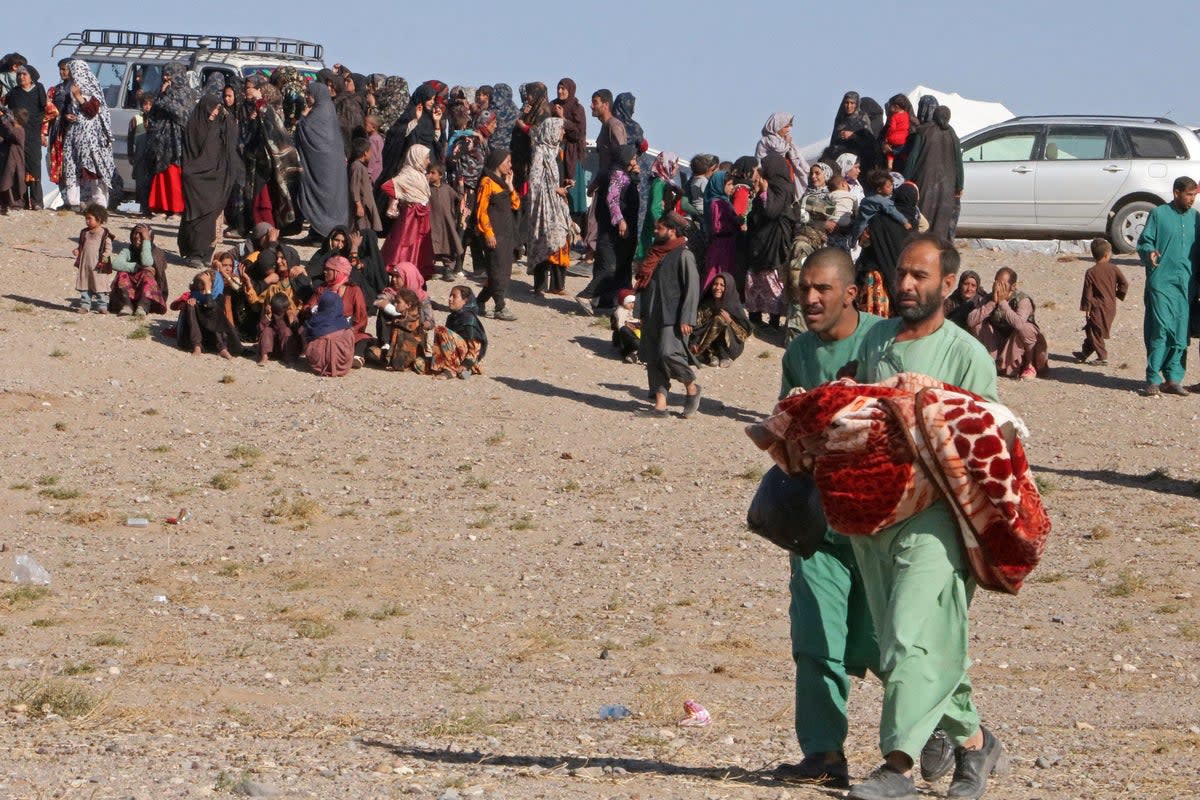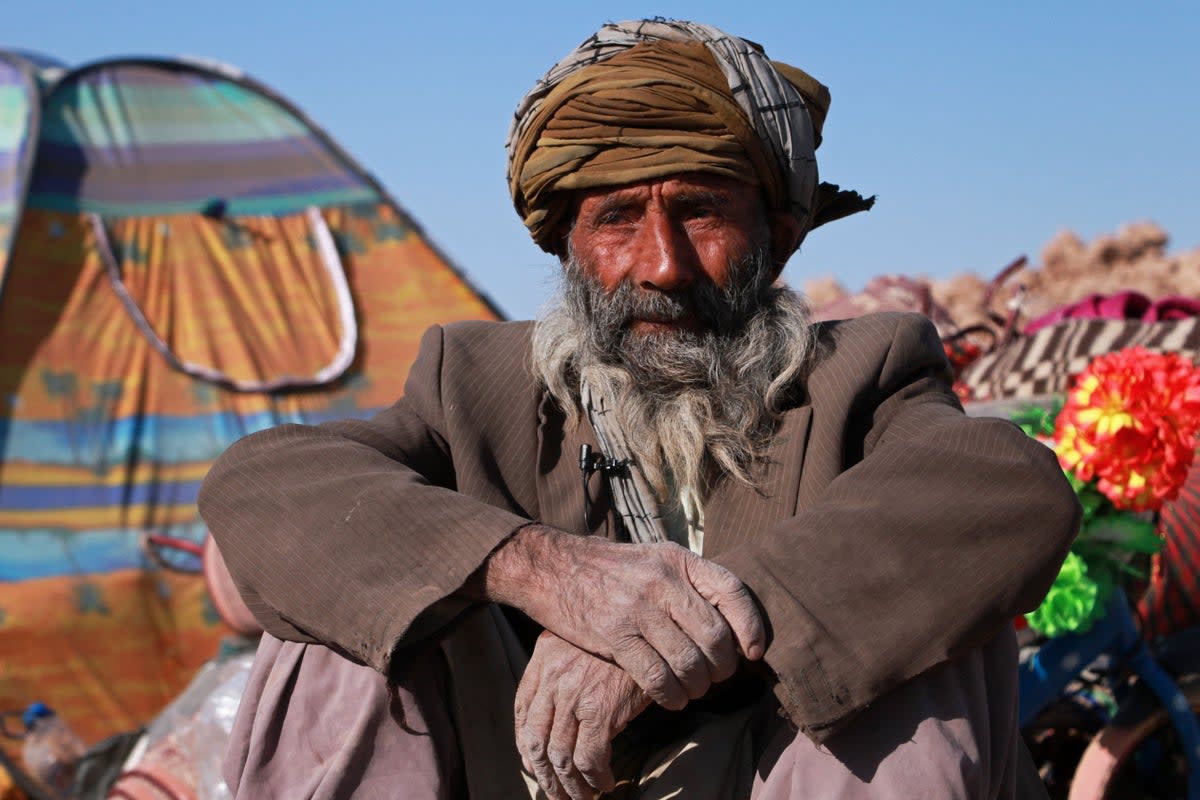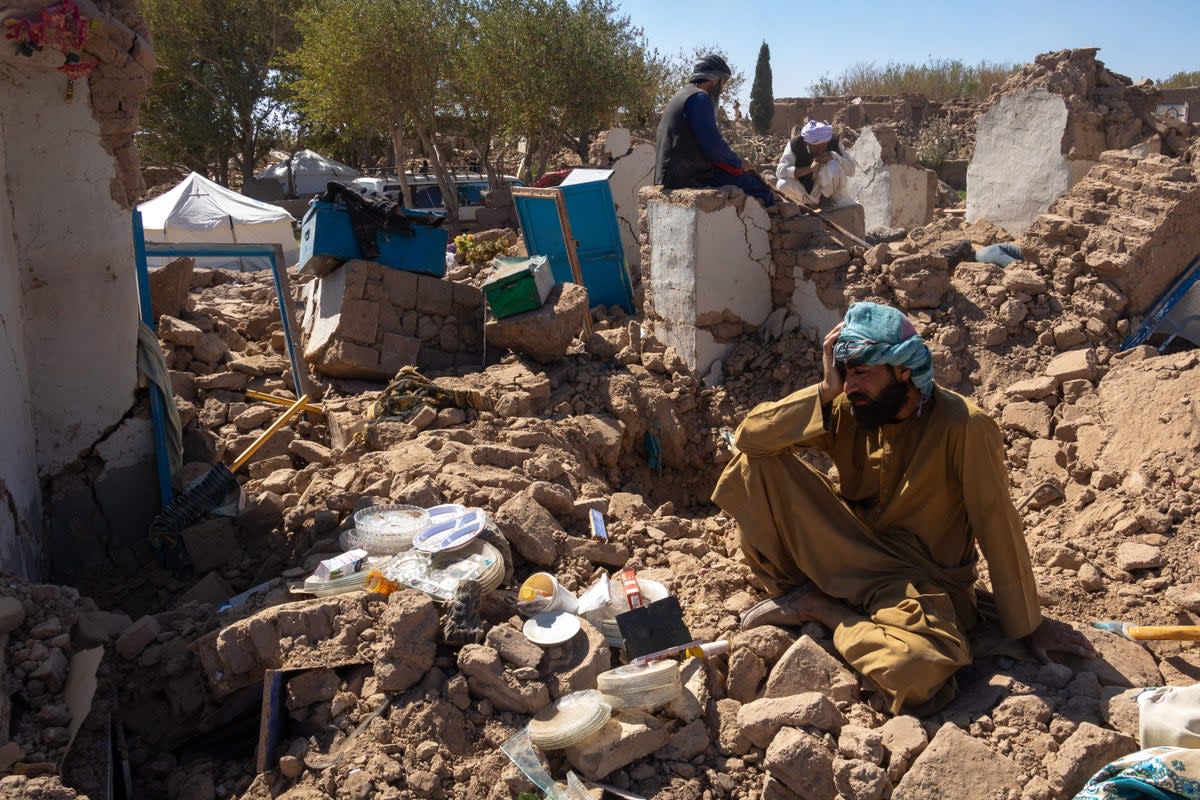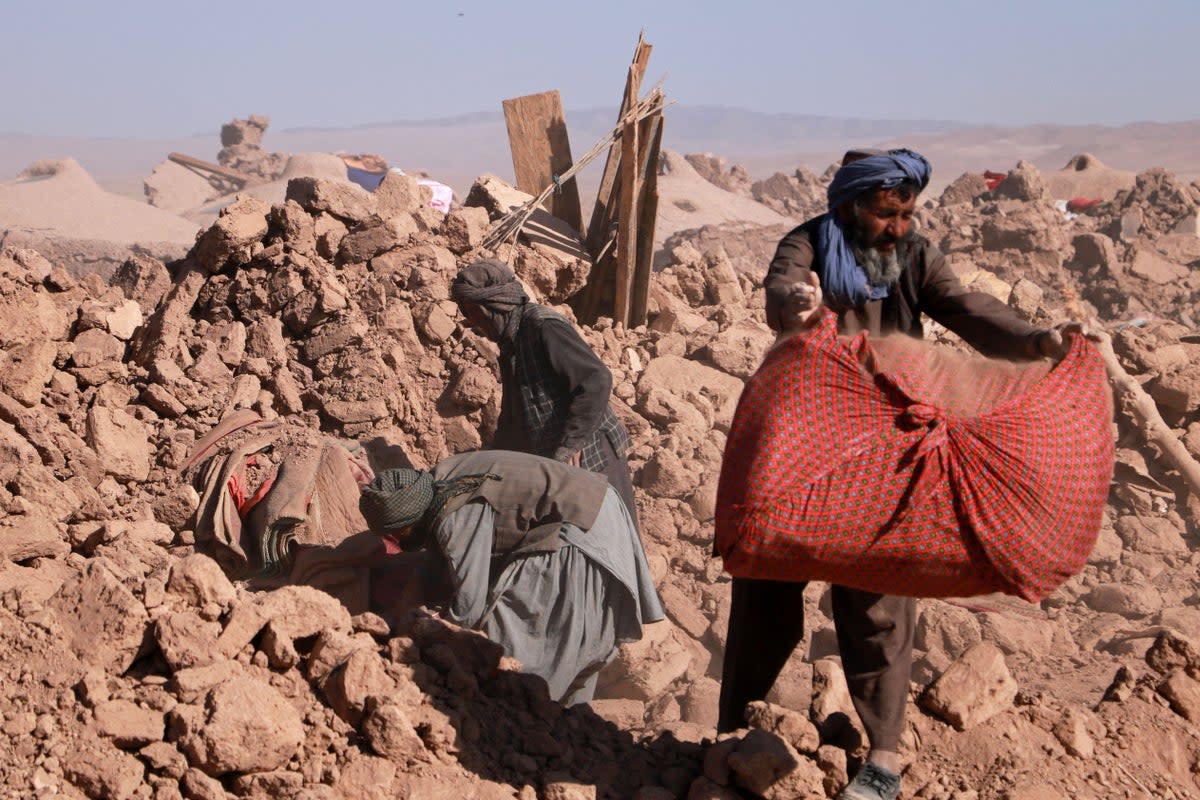Afghanistan earthquake victims still too scared to go inside amid desperate wait for aid

Survivors of the earthquakes that struck Afghanistan over the weekend have described how they remain too traumatised to go back inside their homes, with aftershocks continuing to hit the region as the wait for international aid continues.
More than 2,000 people were killed on Saturday after a 6.2-magnitude earthquake struck Herat province in western Afghanistan, making it one of the deadliest seismic incidents in the country’s history.
On Wednesday another major earthquake measuring 6.3 shook the same region. Deeply distressed survivors have been left to fend for themselves, sifting through rubble by hand to look for their missing loved ones.
The earthquakes that struck on Saturday were followed by nearly 20 aftershocks that went over 4.0 on the Richter scale, with Wednesday’s quake alone resulting in three aftershocks.
A reluctance to engage with the Taliban’s de facto government in Kabul has complicated efforts to get international aid to the region, while global attention has also been drawn away from the disaster by the escalating conflict in Israel.
While the Taliban’s officials initially said there were 2,445 deaths across Herat after the weekend tremors, they did not give an exact breakdown of those injured.
The spokesperson for the de facto regime’s national disaster authority, Janan Sayeeq, on Sunday revised down the number of injured from 9,240 to “more than 2,000”.
“I was working in the city when the earthquake shook my office building,” Monis Rahmani, a 23-year-old Herat resident, told The Independent over a phone call.
“When I went home and drove to the Naib Rafi village, families who were crying and looking for their members said that no one was alive,” he said.

Naib Rafi is the hardest-hit village in Herat’s Zinda Jan district, which suffered the highest impact from the quake.
Only the men who left their village during the day to go for work had survived, and when they returned home, they learnt their wives, parents or children were either dead or missing in the rubble, he said.
He saw survivors and local rescue helpers using their hands to sift through the rubble. “I saw one child who had lost 10 members, including his parents to the earthquake,” he said.
When I went to offer food and water to one man who lost his family and could not find them for more than a day, he refused to take anything. He instead said he wished he had died too.
Monis Rahmani, Herat resident
Locals helping in rescue efforts said most of the dead and injured being pulled out of the rubble were women and children.
Qadir Salehi, another Herat resident who managed to survive the earthquakes and continued helping families, said the scene of the disaster showed mostly women and children trapped under rubble or being rushed to the hospital for their injuries.
The observation echoes the Unicef’s own, which said over 90 per cent of those reported killed by the earthquake have so far been women and children.

“It is heartbreaking because we have a lot of children who have lost their mothers and fathers,” Salehi told The Independent.
He said that since the first quake, hundreds of survivors are now sleeping outside whatever remains of their homes or on the streets.
“People are so scared of aftershocks that they have refused to go inside for four days now. They are worried that the next aftershock will cause them grave damage,” he said.
Gulzada, a resident of Herat’s Kushk area, said her daughter died slowly because no one was able to help her after the child got trapped in the house debris.
“I lost my daughter before my eyes while she was crying for help, but no one came to our aid,” she told The Afghan Times while sitting on the only possessions left for her – a few pillows and mattresses.
“We were standing at the door, with the girls playing – one was our neighbour’s daughter and one was mine. Suddenly, rocks began to rise, and a torrential rain of debris came down, burying the girls under the dust,” she told the women-led Afghan news website.
“They screamed for us to rescue them, but it was impossible. Our path was blocked, and despite our desperate cries, no one reached our daughter,” she said.

More than 1,294 people have died and 1,688 have been injured in Zinda Jan, the UN has said. It added that nearly 500 people – including 191 men and 294 women – are missing.
The Taliban said around 2,000 houses in 20 villages were destroyed and the region affected has just one government-run hospital. At least six schools in Herat have been destroyed, the UN said.
Wednesday’s quake flattened all 700 homes in Herat’s Chahak village. The homes, earlier left untouched by the weekend tremors, were reduced to just piles of debris.
Several international relief organisations working in the crisis-ridden country have asked for increased aid to Afghanistan, citing absolutely dire conditions.
“The ICRC [International Committee of the Red Cross] is present in Herat, in contact with authorities and the @ARCSAfghanistan already supporting and ready to do more,” said Eloi Fillion, the non-profit’s head of Afghanistan.
“Beyond the devastation, this disaster hits those who are already facing many other hardships. Our main concern remains with the people.”
This is a crisis on top of a crisis, said Arshad Malik, the country director for Save the Children.
“Even before this disaster, children were suffering from a devastating lack of food. Donors must provide lifesaving humanitarian assistance. This new emergency requires new funding. Without an urgent injection of money, existing humanitarian programmes will be impacted as already overstretched funding is strained further,” he said.
“The international community cannot turn its backs on children in Herat who need urgent help.”
